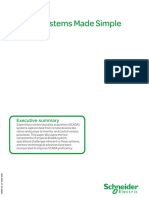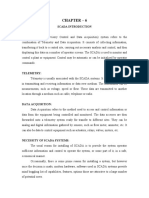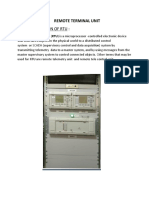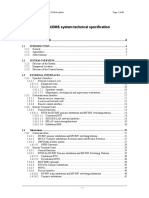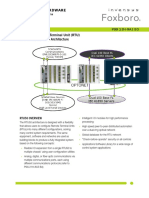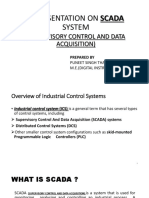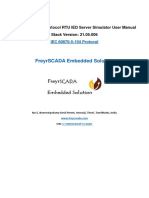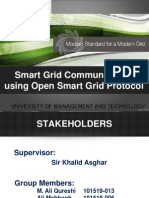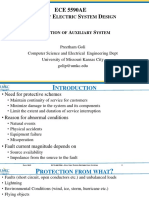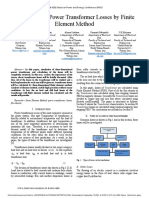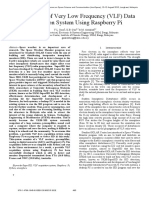0% found this document useful (0 votes)
596 views38 pagesSCADA Communication
The document discusses various topics related to data communication including serial communication, Ethernet communication, and common protocols like Modbus and DNP. It covers broadband and baseband communication links, character encoding, parallel vs serial communication, baud rate, data packets, parity error checking, network topologies like bus, ring and star, open vs closed systems, standards, and the Open Systems Interconnection model. It also provides details on serial communication standards RS-232, RS-423 and RS-485.
Uploaded by
PreethamCopyright
© © All Rights Reserved
We take content rights seriously. If you suspect this is your content, claim it here.
Available Formats
Download as PDF, TXT or read online on Scribd
0% found this document useful (0 votes)
596 views38 pagesSCADA Communication
The document discusses various topics related to data communication including serial communication, Ethernet communication, and common protocols like Modbus and DNP. It covers broadband and baseband communication links, character encoding, parallel vs serial communication, baud rate, data packets, parity error checking, network topologies like bus, ring and star, open vs closed systems, standards, and the Open Systems Interconnection model. It also provides details on serial communication standards RS-232, RS-423 and RS-485.
Uploaded by
PreethamCopyright
© © All Rights Reserved
We take content rights seriously. If you suspect this is your content, claim it here.
Available Formats
Download as PDF, TXT or read online on Scribd
/ 38

